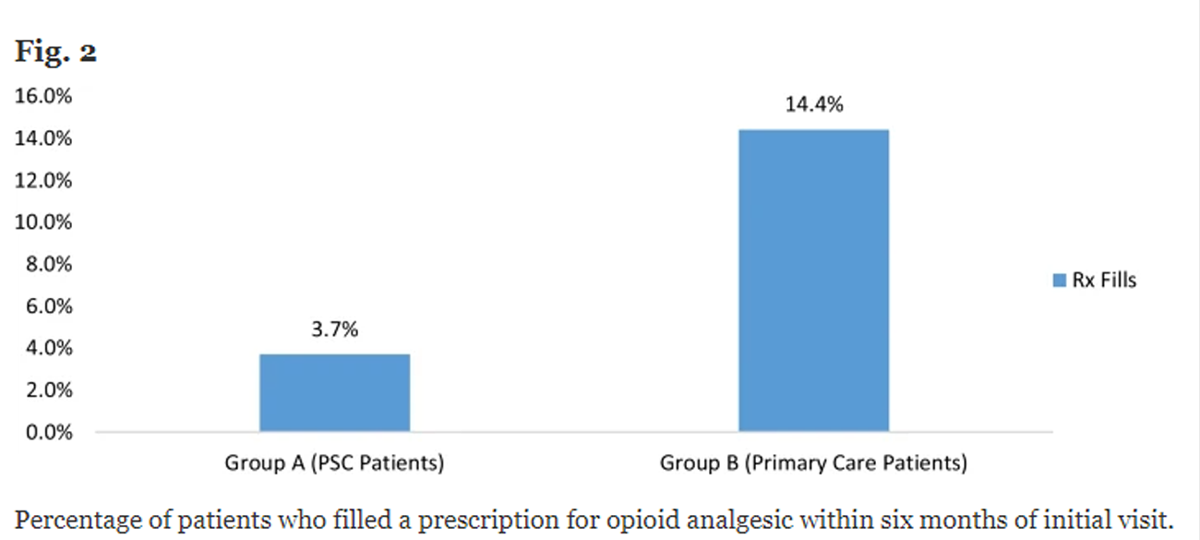Efficiency of Primary Spine Care as Compared to Conventional Primary Care: A Retrospective Observational Study at an Academic Medical Center
Efficiency of Primary Spine Care as Compared to Conventional Primary Care: A Retrospective Observational Study at an Academic Medical Center
SOURCE: Chiropractic & Manual Therapies 2022 (Jan 6); 30 (1): 1
Serena Bezdjian, James M. Whedon, Robb Russell, Justin M. Goehl & Louis A. Kazal Jr.
Southern California University of Health Sciences,
Whittier, CA, 90604, USA.

Opioid use was 389% higher in the Medical group than the PSC group,
who’s care was provided by a Doctor of Chiropractic.
Background: Primary Spine Care (PSC) is an innovative model for the primary management of patients with spine-related disorders (SRDs), with a focus on the use of non-pharmacological therapies which now constitute the recommended first-line approach to back pain. PSC clinicians serve as the initial or early point of contact for spine patients and utilize evidence-based spine care pathways to improve outcomes and reduce escalation of care (EoC) [e.g., spinal injections, diagnostic imaging, hospitalizations, referrals to a specialist]. The present study examined 6-month outcomes to evaluate the efficiency of care for patients who received PSC as compared to conventional primary care. We h
Methods: This was a retrospective observational study. We evaluated 6-month outcomes for two groups seen and treated for an SRD between February 01, 2017 and January 31, 2020. Patient groups were comprised of N = 1,363 PSC patients (Group A) and N = 1,329 PC patients (Group B). We conducted Pearson chi-square and logistic regression (adjusting for patient characteristics that were unbalanced between the two groups) to determine associations between the two groups and 6-month outcomes.
Results: Within six months of an initial visit for an SRD, a statistically significantly smaller proportion of PSC patients utilized healthcare resources for spine care as compared to the PC patients. When adjusting for patient characteristics, those who received care from the PSC clinician were less likely within 6 months of an initial visit to be
hospitalized (OR = .47, 95% CI .23-.97),
fill a prescription for an opioid analgesic (OR = .43; 95% CI .29-.65),
receive a spinal injection (OR = .56, 95% CI .33-.95), or
have a visit with a specialist (OR = .48, 95% CI .35-.67)
as compared to those who received usual primary care.
There is more like this @ our:
LOW BACK PAIN Section and the:

